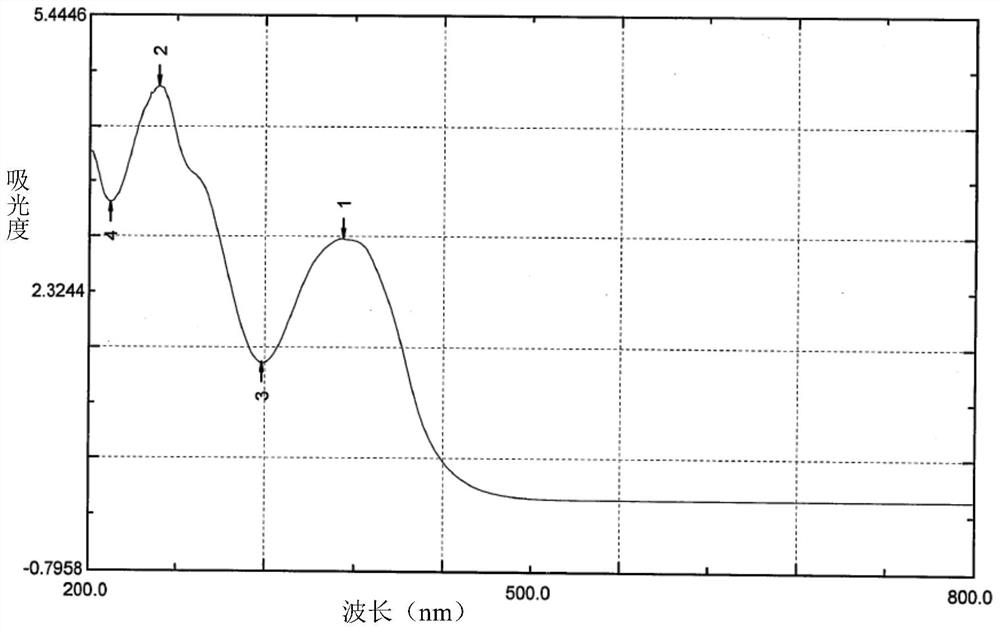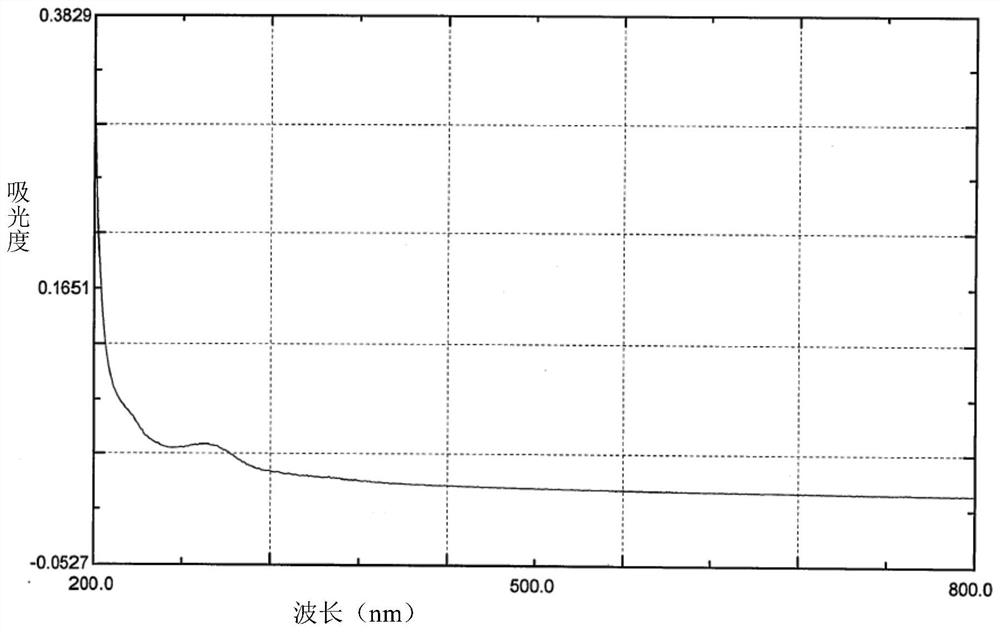Method for detecting colored impurities in tigecycline for injection
A detection method, the technology of tigecycline, is applied in the direction of color/spectral characteristic measurement, measurement device, and material analysis through optical means, which can solve the problems of inaccurate detection results and provide accurate qualitative results
- Summary
- Abstract
- Description
- Claims
- Application Information
AI Technical Summary
Problems solved by technology
Method used
Image
Examples
Embodiment 1
[0034] Specific verification of wavelength absorption
[0035] Weigh an appropriate amount of tigecycline API and blank excipient (lactose) respectively according to the prescription amount, add purified water to dissolve and carry out full-wavelength scanning, see figure 1 and 2 . according to figure 1 and figure 2 It can be seen that tigecycline API and blank excipient (lactose) have no absorption in the range of 609-629nm, thereby avoiding the impact on the absorbance of tigecycline colored impurities.
[0036] The samples with different degrees of oxidation damage were used to screen the detection wavelength. In the tigecycline sample solution for injection containing tigecycline 10mg / ml (pure water is used as solvent), adding concentration is 1% hydrogen peroxide, and gained sample after different standing time see image 3 , scan the full wavelength of each sample, and the scanning results under various conditions are shown in Figure 4 . As time goes on, more an...
Embodiment 2
[0039] Verification of Absorption Wavelength
[0040] Three wavelengths of 609nm, 619nm, and 629nm were used to detect three batches of samples of tigecycline for injection, wherein water was used as a solvent, and the content of tigecycline for injection in the preparation was 10 mg / mL to be tested. The impurity absorbances of the three batches of samples to be tested are shown in Table 1.
[0041] Table 1
[0042]
[0043] It can be seen from Table 1 that the absorbance obtained by the three detection wavelengths fluctuates within the range of 0.002, and there is no significant difference from the specific values, and the results can be considered to be basically the same.
Embodiment 3
[0045] Validation of solvents
[0046] According to the usage and dosage requirements of the original preparation instructions, the samples were redissolved with purified water, 10% acetonitrile aqueous solution, 0.9% sodium chloride injection, 5% glucose injection and lactated Ringer's test respectively to form tigecycline for injection with a content of 10mg / mL of the sample to be tested, and then place each sample to be tested at room temperature for 6 hours to detect the impurity absorbance of the product, and the results are shown in Table 2.
[0047] Table 2
[0048]
[0049]
[0050] The data in Table 2 show that different compatible solvents do not affect the detection of the absorbance of impurities.
PUM
| Property | Measurement | Unit |
|---|---|---|
| Wavelength | aaaaa | aaaaa |
Abstract
Description
Claims
Application Information
 Login to View More
Login to View More - R&D
- Intellectual Property
- Life Sciences
- Materials
- Tech Scout
- Unparalleled Data Quality
- Higher Quality Content
- 60% Fewer Hallucinations
Browse by: Latest US Patents, China's latest patents, Technical Efficacy Thesaurus, Application Domain, Technology Topic, Popular Technical Reports.
© 2025 PatSnap. All rights reserved.Legal|Privacy policy|Modern Slavery Act Transparency Statement|Sitemap|About US| Contact US: help@patsnap.com



